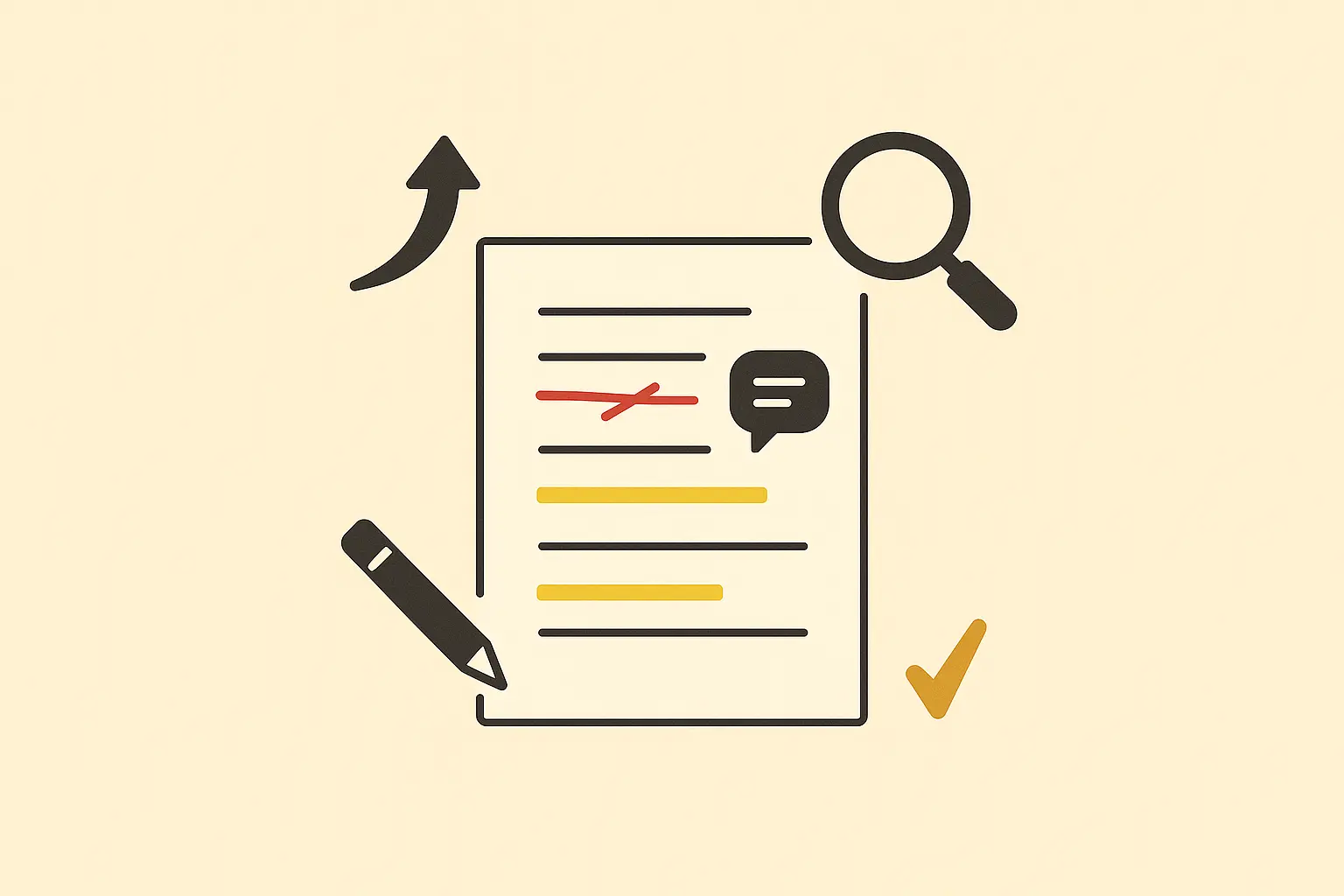Finished Your First Draft? Here’s What to Do Next

First of all, give yourself a big pat on the back. Countless people dream of writing a novel, but very few actually finish a draft. You’ve accomplished something huge, and that deserves celebration.
But as any seasoned author will attest, that first draft is you telling yourself the story. Now, the real work begins: turning that story into a compelling experience for others. The journey from a raw draft to a polished book happens during revision. This guide will walk you through what to do after you finish your novel. Let’s get into it.
Quick Summary
Finished your first draft? Here's your six-step roadmap:
| Step | Action | Purpose |
|---|---|---|
| 1 | Let it rest | Gain perspective by stepping away from the draft. |
| 2 | Read it cover to cover | Experience the story as a reader—no editing yet. |
| 3 | Fix big-picture issues | Address plot holes, pacing problems, and character arcs. |
| 4 | Polish the prose | Refine your language, dialogue, and clarity. |
| 5 | Get feedback | Gather input from critique partners, beta readers, or Inkshift. |
| 6 | Revise with purpose | Use feedback to shape a stronger next draft. |
Your First Step: Define Your Goal
Before you change a single word, think about your ultimate goal for this novel. Do you dream of seeing it on a bookstore shelf, which means finding a literary agent and a traditional publisher? Are you planning to self-publish and build a readership directly? Or was this project a personal journey, meant for your own satisfaction or to share with a small circle?
Your goal dictates your path. If you intend for others to read and enjoy your book, you'll need to seek outside opinions. Writers are inherently too close to their own work to see all its flaws. You know every hidden motivation, every piece of foreshadowing, and every subtle cue because you built the world word by word. A reader only knows what’s on the page. This gap between authorial intent and reader perception is why outside eyes are non-negotiable. You need feedback. The question is when.
The Post-Draft Game Plan: A 6-Step Guide
It can be tempting to dive right back into page one, but a structured approach will save you time and frustration. Resist the urge to make small tweaks and instead follow a process that tackles the biggest issues first. Start with structural changes, then line-level prose.
Step 1: Let It Rest
Your first instinct might be to start editing immediately. Don't. You need to get distance from the manuscript to see it with fresh eyes. Letting your draft sit for at least a couple weeks is a common recommendation among authors. This resting period allows you to detach emotionally and forget the finer details, enabling you to experience it more like a reader would. Use this time to work on a different project, read a book, or take up a non-writing hobby.
Step 2: Read It Cover to Cover
Once your break is over, read your manuscript from beginning to end without editing. The goal here is to experience the story as a whole. This read-through will jog your memory about forgotten subplots, dangling character arcs, and subtle details you introduced hundreds of pages ago. Make notes as you read. Write down what works, what feels boring, where you get confused, and any major plot holes or inconsistencies that jump off the page.

Step 3: The Second Draft (The Big Edit)
Now it's time to tackle the major structural issues you identified. This is the "developmental edit" stage, where you focus on the big picture. Don’t get bogged down in perfecting sentences; you might end up deleting the entire chapter anyway. Your focus should be on:
- Plot and Structure: Do the major plot points land correctly? Are there any glaring plot holes or inconsistencies?
- Character Arcs: Are your characters’ motivations clear? Do they grow or change in a believable way?
- Pacing: Are there scenes that drag or moments that feel rushed? Every scene should advance the plot or develop a character in a meaningful way.
Fixing these foundational elements is the priority. Be prepared to rewrite entire sections, move chapters, or cut characters. It’s messy but essential work.
If you'd like more information about the different kinds of editing (developmental, copy, proof), check out this article where we dive into the specifics.
Step 4: Polish Your Prose
With the major structural problems solved, you can zoom in on the line-level prose. This is where you refine the language to make your story sing. Read your manuscript aloud to catch awkward phrasing and clunky dialogue. Clean up repetitive words, clarify confusing sentences, and fix obvious spelling and grammar mistakes. The goal isn’t perfection, but to make the manuscript clean enough that a reader won’t get tripped up by errors and can focus on the story itself.
Step 5: Seek Constructive Feedback
Now that you’ve taken the manuscript as far as you can on your own, it’s time for outside eyes. Getting feedback is an investment in your book’s future. Here are the most common options:
- Critique Partners/Writing Groups: These are fellow writers who trade feedback. They understand the craft and can offer insightful, peer-level advice.
- Beta Readers: These are avid readers (ideally of your genre) who can provide a reader’s perspective on what is and isn't working in the story.
- Professional Editors: Hiring an editor for a manuscript assessment provides a detailed report on narrative elements like plot, pacing, and characterization. This is a significant investment but can provide invaluable professional guidance.
- AI-Powered Feedback: For an instant, in-depth analysis, tools like Inkshift can provide a comprehensive critique of your plot, characters, pacing, and prose, helping you identify strengths and weaknesses quickly.
While it's tempting to ask friends and family, their feedback is often biased because they want to be supportive. Seek out objective readers who can give you honest, constructive criticism.
Step 6: Take the Feedback Seriously
As you receive feedback, look for common themes. If one person didn't like your ending, it might be a matter of taste. If three people tell you the ending feels unearned, you likely have a problem to address. Don't accept every suggestion as gospel, but consider all feedback with an open mind. It's your story, but the goal is to make it resonate with readers.
For a more comprehensive view of accepting feedback, check out our detailed guide.
The Journey Continues
Congratulations again on finishing your first draft! You've done what most people can only dream of. The road to a finished novel is long, but revising is where the magic happens. And by following a structured process, you can transform your raw story into a polished, compelling book.
And if you’re looking for a fast, easy way to get a deep analysis of your manuscript, give Inkshift a try. It provides an instant, in-depth report on everything from plot and character to prose and marketability, giving you a clear roadmap for your revisions. Best of luck!

